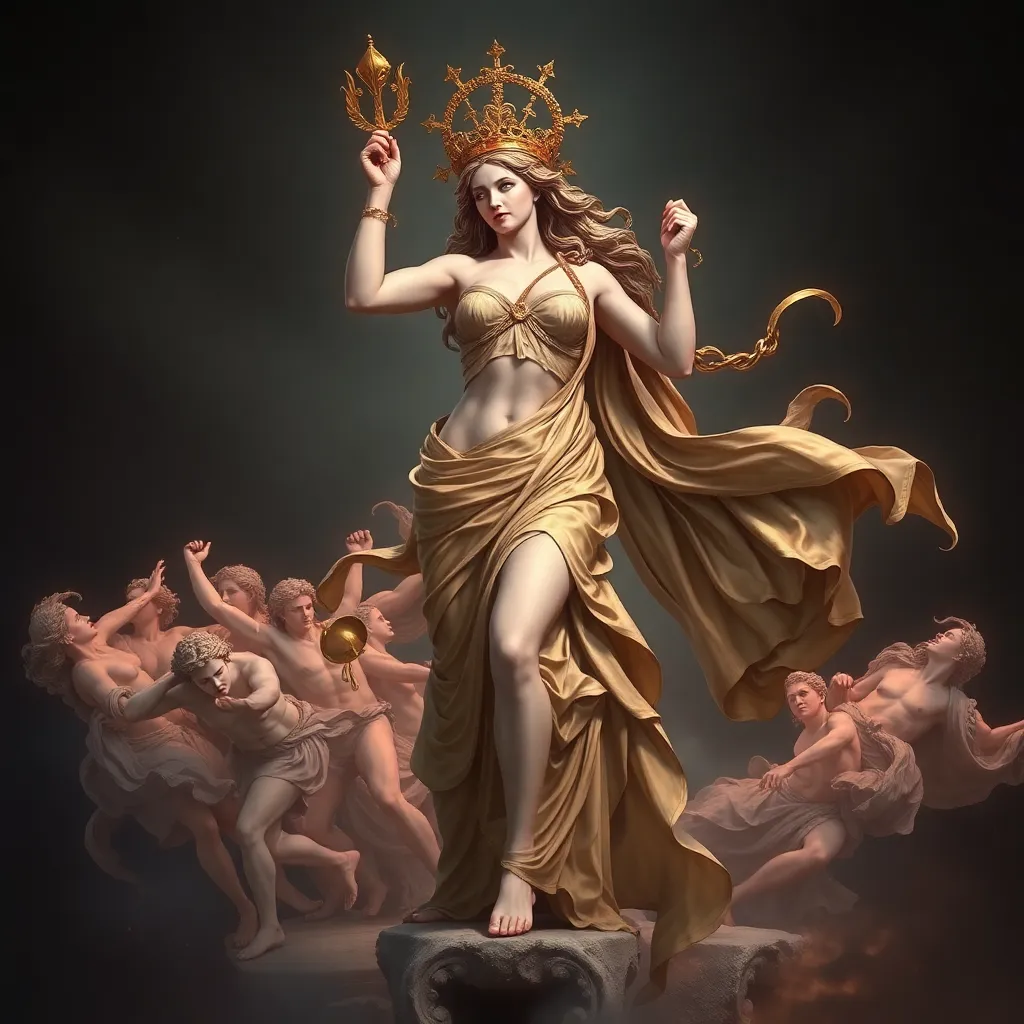Hera in Roman Mythology: The Transformation into Juno
I. Introduction
In the rich tapestry of Greek mythology, few figures are as prominent as Hera, the queen of the gods and the goddess of marriage and family. Her stories are filled with drama, jealousy, and power, reflecting the complexities of divine and human relationships. When the Romans adopted Greek mythology, they transformed many Greek deities, with Hera evolving into the Roman goddess Juno. This article explores the transformation from Hera to Juno, examining their origins, similarities, differences, and lasting impact.
II. The Origins of Hera and Juno
A. Hera’s role in Greek mythology
Hera, daughter of the Titans Cronus and Rhea, holds a significant place in Greek mythology. As the sister and wife of Zeus, she embodies the ideals of marriage and fidelity, yet her narratives often delve into themes of jealousy and vengeance.
- Family background and lineage: Hera is one of the twelve Olympian deities, and her lineage connects her to the primordial forces of creation.
- Symbolism and attributes: She is often depicted with a peacock, symbolizing beauty and pride, and she is associated with the cow, representing nurturing and motherhood.
B. Juno’s emergence in Roman mythology
As the Romans encountered Greek culture, they adapted many of its myths and deities, leading to the emergence of Juno as a central figure in Roman religion.
- Cultural influences and adaptations: Juno assimilated traits from Hera but also reflected Roman virtues, emphasizing loyalty and protection of the state.
- Key attributes and symbolism: Juno is often depicted as a matronly figure who oversees marriage and childbirth, reinforcing her role as protector of women.
III. Similarities Between Hera and Juno
A. Shared characteristics and roles
Despite their cultural differences, Hera and Juno share many characteristics that underline their roles as goddesses of marriage and family.
- Goddess of marriage and motherhood: Both deities are revered as the protectors of marriage and are invoked in rituals surrounding weddings.
- Protector of women and families: Hera and Juno are seen as guardians of women, particularly in their roles as mothers and wives.
B. Iconography and representation in art
Both goddesses are frequently depicted in art, often shown alongside symbols that represent their divine attributes. They are portrayed as majestic figures, often adorned with crowns and accompanied by animals like the peacock (Hera) and the she-wolf (Juno).
IV. Differences in Their Worship and Cults
A. Hera’s worship in ancient Greece
Hera was worshipped extensively throughout ancient Greece, with numerous temples and festivals dedicated to her.
- Major temples and festivals: The Heraion of Argos was one of her most significant temples, and the Heraia, a festival in her honor, celebrated women’s athletic prowess.
- Cultural significance: Hera’s worship emphasized the importance of marriage and fidelity, reflecting societal values of the time.
B. Juno’s veneration in ancient Rome
In contrast, Juno held a prominent role in the Roman state religion, reflecting the Roman emphasis on civic duty and family.
- Key temples and festivals: The Temple of Juno Moneta in Rome served as a significant site of worship, while the Matronalia festival celebrated her role as a protector of women.
- Integration into Roman state religion: Juno was considered a guardian of the state, often invoked during civic ceremonies.
V. Myths Associated with Hera and Juno
A. Prominent myths involving Hera
Hera’s myths often revolve around her tumultuous marriage to Zeus and her rivalries with other deities.
- Her marriage to Zeus: Hera’s marriage is marked by jealousy due to Zeus’s numerous infidelities, leading to many myths where she seeks revenge.
- Rivalries with other deities: Hera’s conflicts with figures like Heracles and Leto highlight her fierce protectiveness and jealousy.
B. Juno’s myths in Roman tales
Juno’s narratives often explore her role as a powerful figure within the Roman pantheon.
- Juno’s role in the Aeneid: In Virgil’s epic, Juno is portrayed as a protector of Carthage, showcasing her complex character and motivations.
- Her interactions with other Roman gods: Juno frequently interacts with Jupiter, reinforcing her importance in the Roman divine hierarchy.
VI. The Transformation of Identity
A. How cultural shifts influenced the transformation from Hera to Juno
The transformation from Hera to Juno reflects broader cultural shifts as the Romans adapted Greek mythology to fit their societal norms and values.
B. The impact of Roman values on the portrayal of Juno
Roman values of duty, loyalty, and familial responsibility shaped Juno’s portrayal, emphasizing her role as a protector of the Roman state and family.
C. The blending of Greek and Roman mythologies
The synthesis of Greek and Roman mythologies created a rich tapestry of narratives and characteristics, allowing both Hera and Juno to coexist in cultural consciousness.
VII. Modern Interpretations and Legacy
A. Hera and Juno in contemporary culture
Today, both Hera and Juno continue to inspire literature, film, and art, often representing complex themes of femininity and power.
- Literature, film, and art: Their stories are retold in contemporary media, highlighting their relevance in modern narratives.
- Feminist interpretations of their stories: Scholars and artists explore the implications of their narratives, often examining themes of jealousy, power dynamics, and gender roles.
B. The significance of their transformation in understanding gender roles
The transformation from Hera to Juno signifies the evolving understanding of gender roles in society, reflecting the values and ideals of both ancient Greece and Rome.
VIII. Conclusion
In summary, the transformation from Hera to Juno illustrates the interplay between mythology and cultural values. Both goddesses represent enduring ideals of marriage, fidelity, and motherhood, while their differences highlight the unique aspects of Greek and Roman societies. The legacy of Hera and Juno continues to resonate, offering valuable insights into the understanding of gender roles and the complexities of divine femininity in mythology.
As we reflect on their stories, we see how these ancient figures remain relevant, reminding us of the timeless nature of their narratives and the lessons they impart.




